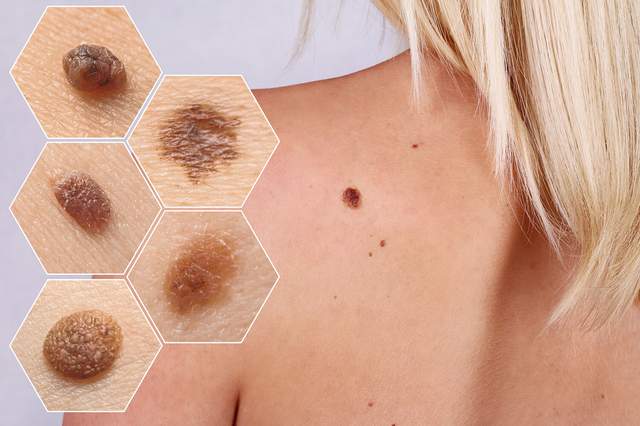Warning Signs of Skin Cancer You Shouldn't Ignore

Why is skin cancer so common?
Skin cancer is the most common type of cancer in the United States. And it's also one of the leading causes of cancer-related deaths, with more than 3.5 million people diagnosed each year.
Why are the numbers so high? Each time you go outside without taking proper precautions, you’re increasing your risk of developing skin cancer. Many people don’t apply sunscreen on a daily basis (SPF is not just for vacation!), let alone reapplying throughout the day to ensure you’re protected all day long.
Skin cancers are classified as either non-melanoma or melanoma skin cancers, and they are generally grouped into two categories:
- Non-melanoma skin cancers include basal cell carcinomas, squamous cell carcinomas, and other less common types of skin cancers.
- Melanoma skin cancers are more dangerous because they can spread to other parts of the body if not treated early on.
What are the warning signs?
For melanoma, look for the ‘ABCDE’ signs:
- Asymmetry: One part of a mole or birthmark doesn’t match the other.
- Border: The edges are irregular, ragged, notched, or blurred.
- Color: The color is not the same all over and may include shades of brown or black, sometimes with patches of pink, red, white, or blue.
- Diameter: The spot is larger than ¼ inch across – about the size of a pencil eraser – although melanomas can sometimes be smaller than this
- Evolving: The mole is changing in size, shape, or color.
For basal cell carcinomas, look for:
- Flat, firm, pale or yellow areas, similar to a scar
- Raised reddish patches that might be itchy
- Small translucent, shiny, pearly bumps that are pink or red and which might have blue, brown, or black areas
- Pink growths with raised edges and a lower area in their center, which might have abnormal blood vessels spreading out like the spokes of a wheel
- Open sores (that may have oozing or crusted areas) and which don’t heal, or heal and then come back
For squamous cell carcinomas, look for:
- Rough or scaly red patches, which might crust or bleed
- Raised growths or lumps, sometimes with a lower area in the center
- Open sores (that may have oozing or crusted areas) and which don’t heal, or heal and then come back
- Wart-like growths
Remember that just because you don't show any of the above signs, doesn't mean that you shouldn't be checked out by a doctor. Here are some more smaller signs that you should book a trip to the dermatologist:
- Any new spots
- Any spot that doesn’t look like others on your body
- Any sore that doesn’t heal
- Redness or new swelling beyond the border of a mole
- Color that spreads from the border of a spot into surrounding skin
- Itching, pain, or tenderness in an area that doesn't go away or goes away then comes back
- Changes in the surface of a mole: oozing, scaliness, bleeding, or the appearance of a lump or bump
How can I prevent it?
The best way to prevent skin cancer is to cover your skin with UPF50+ clothing that will block out harmful UV rays. Tutublue’s swimsuits are light and breathable, so you’ll feel comfortable wearing them all day long, even on the hottest of days!
In addition to UPF50+ clothing, applying broad-spectrum sunscreen, wearing wide-brim hats, and seeking shade will keep you protected from the sun.





Leave a comment